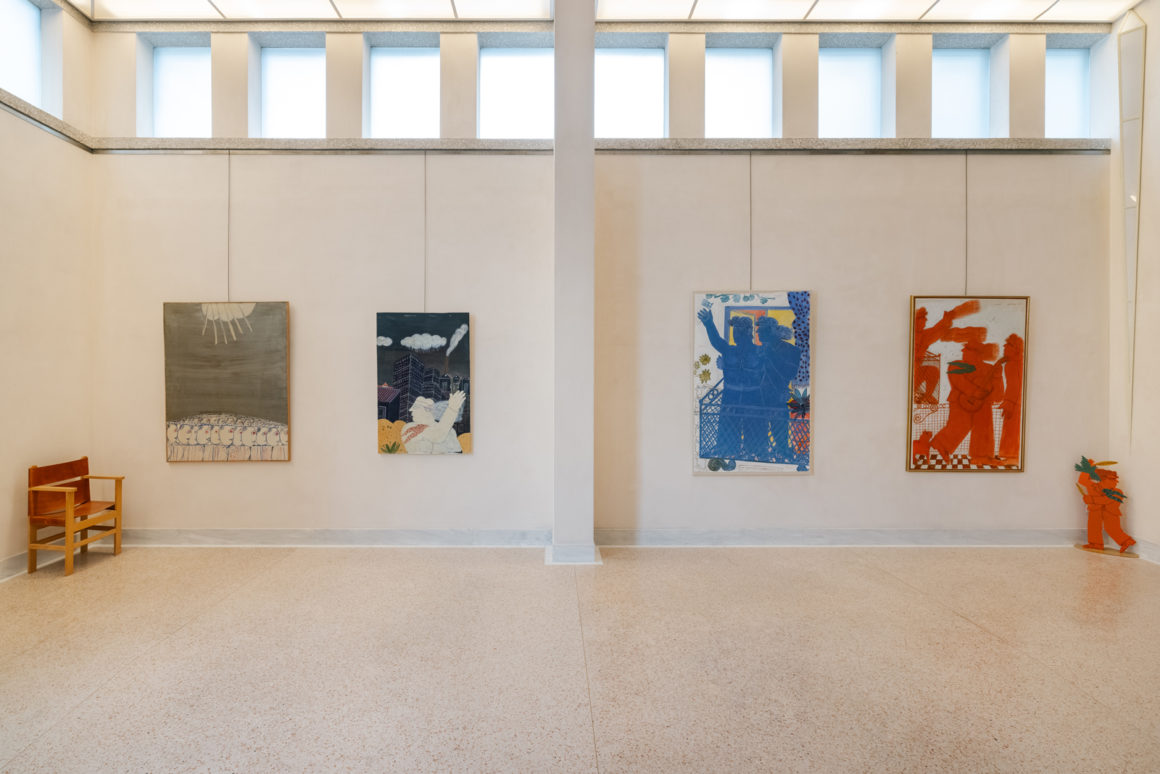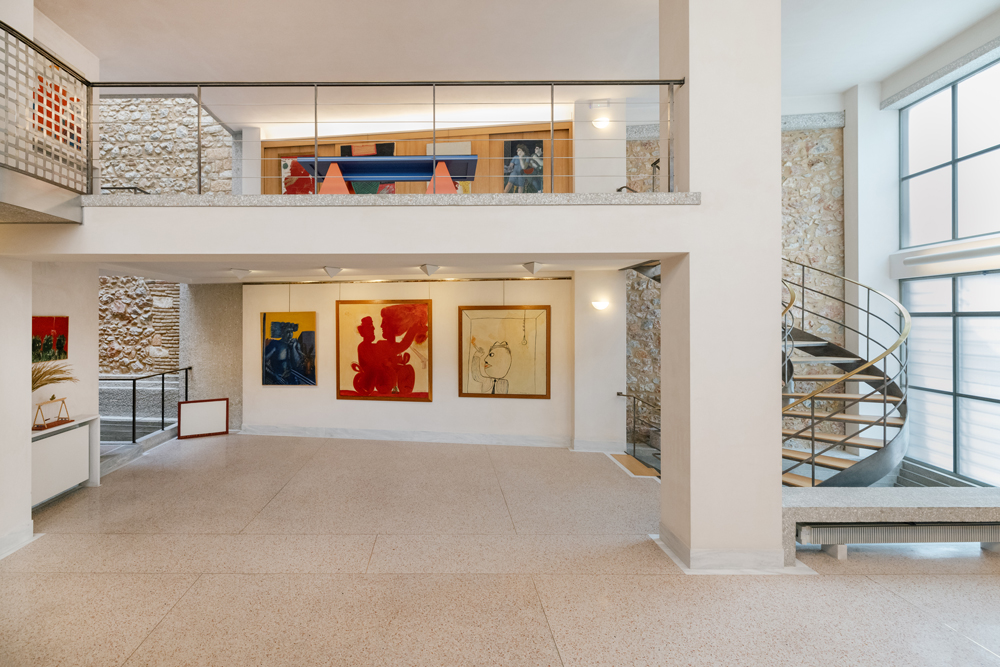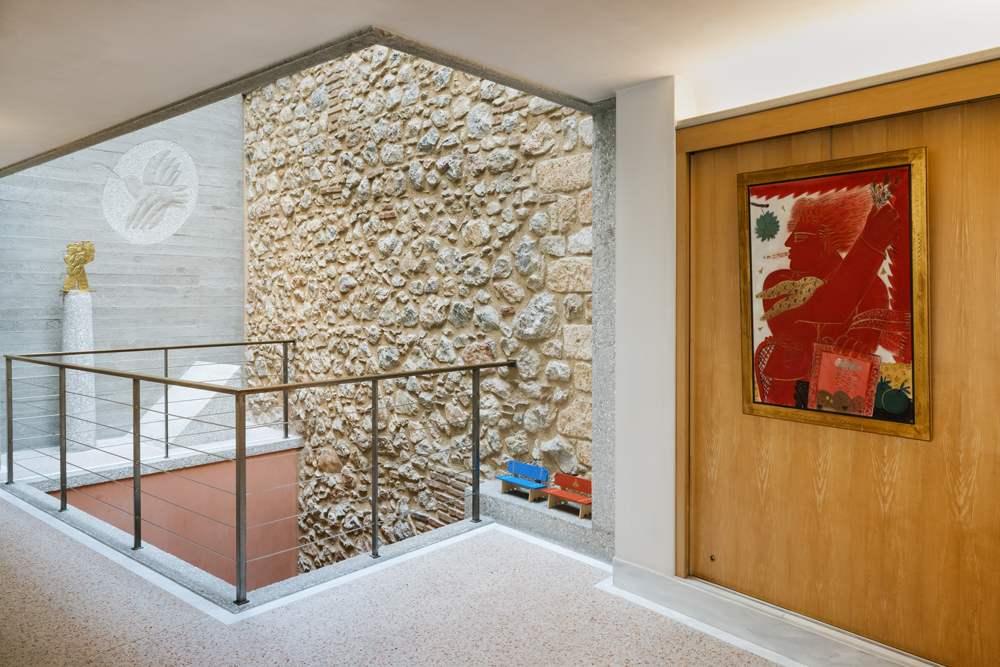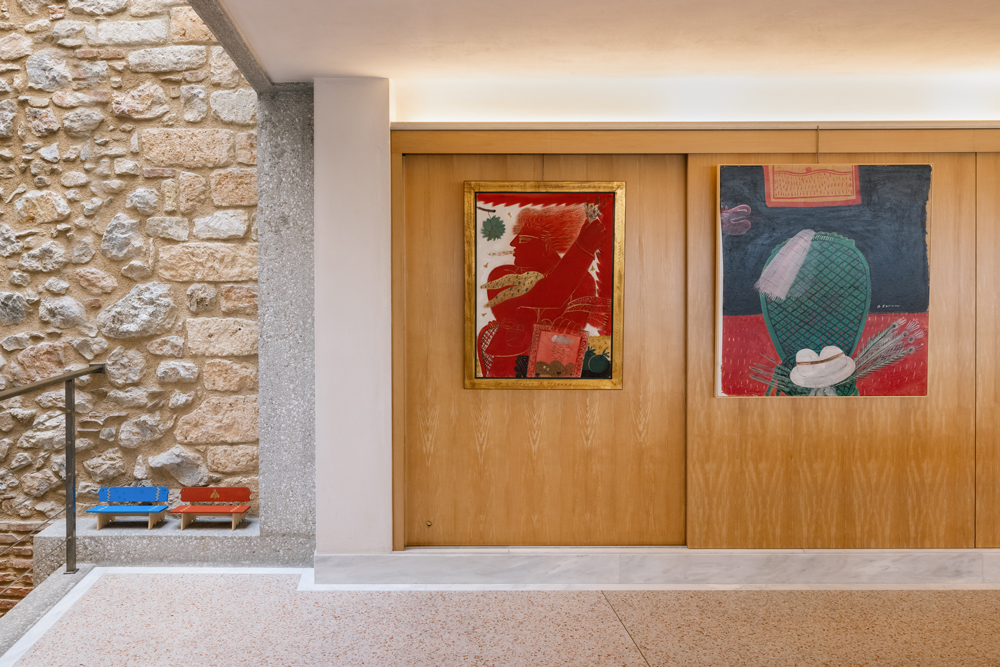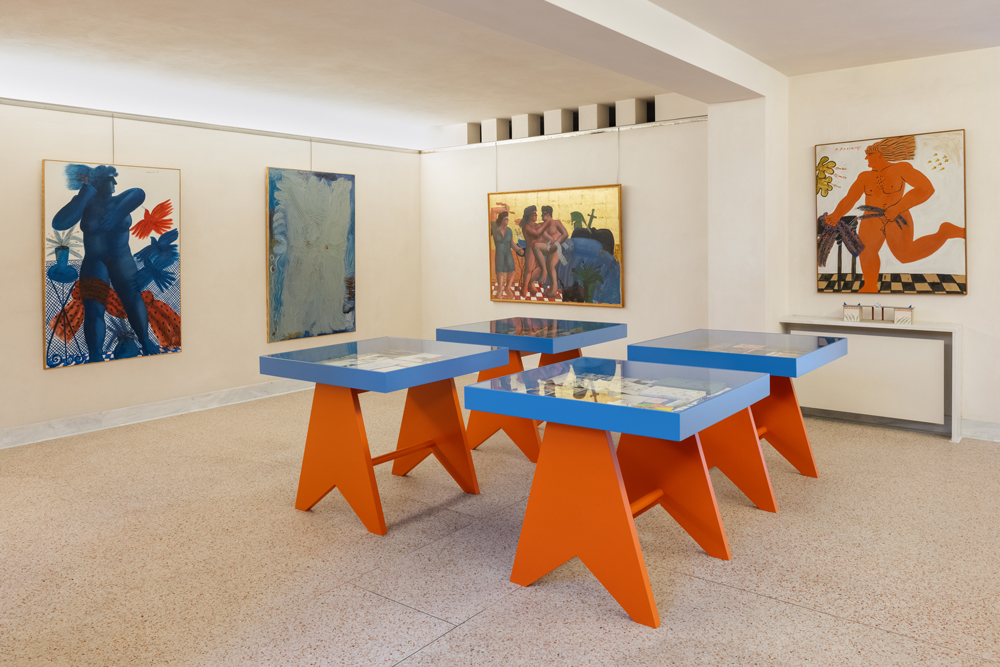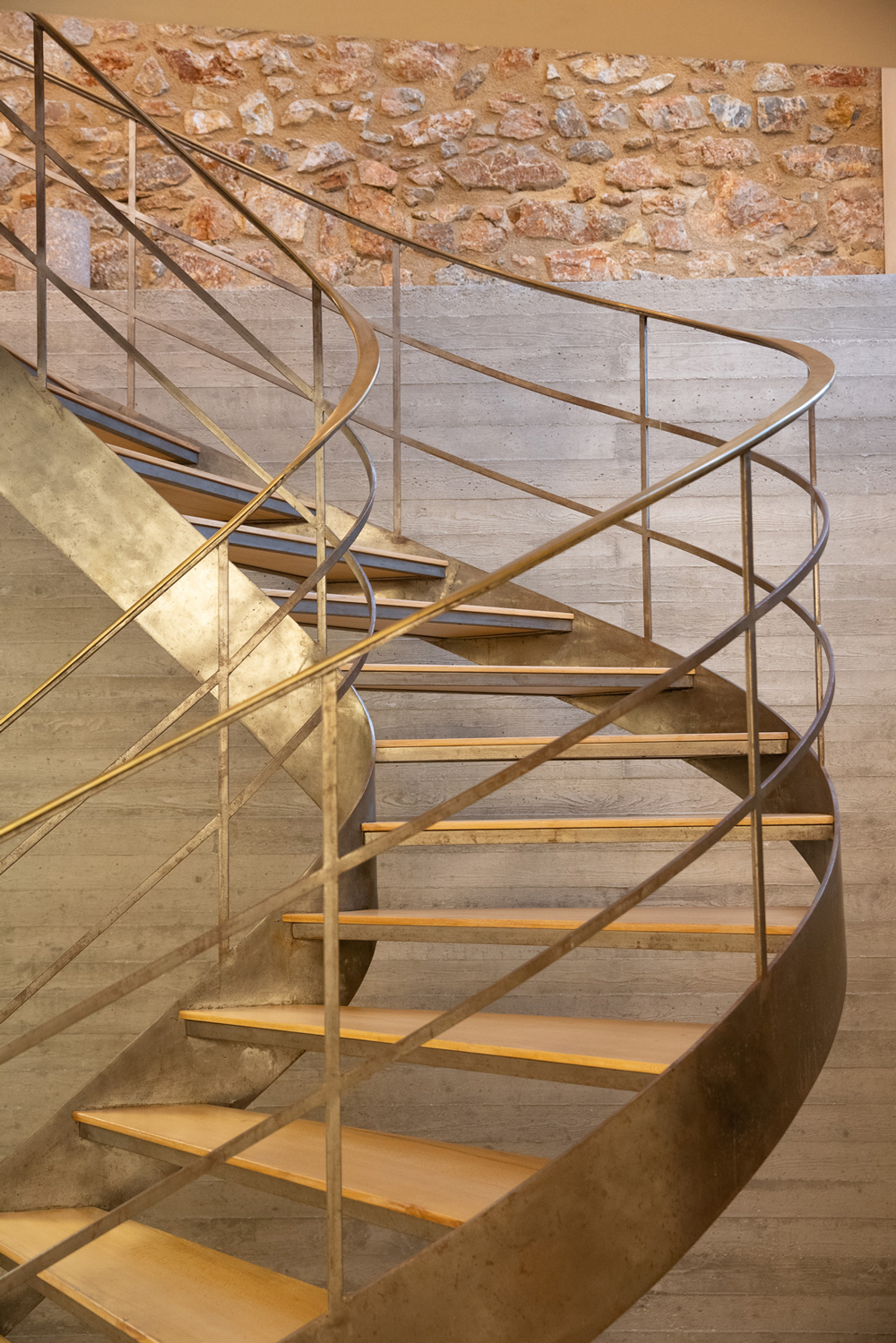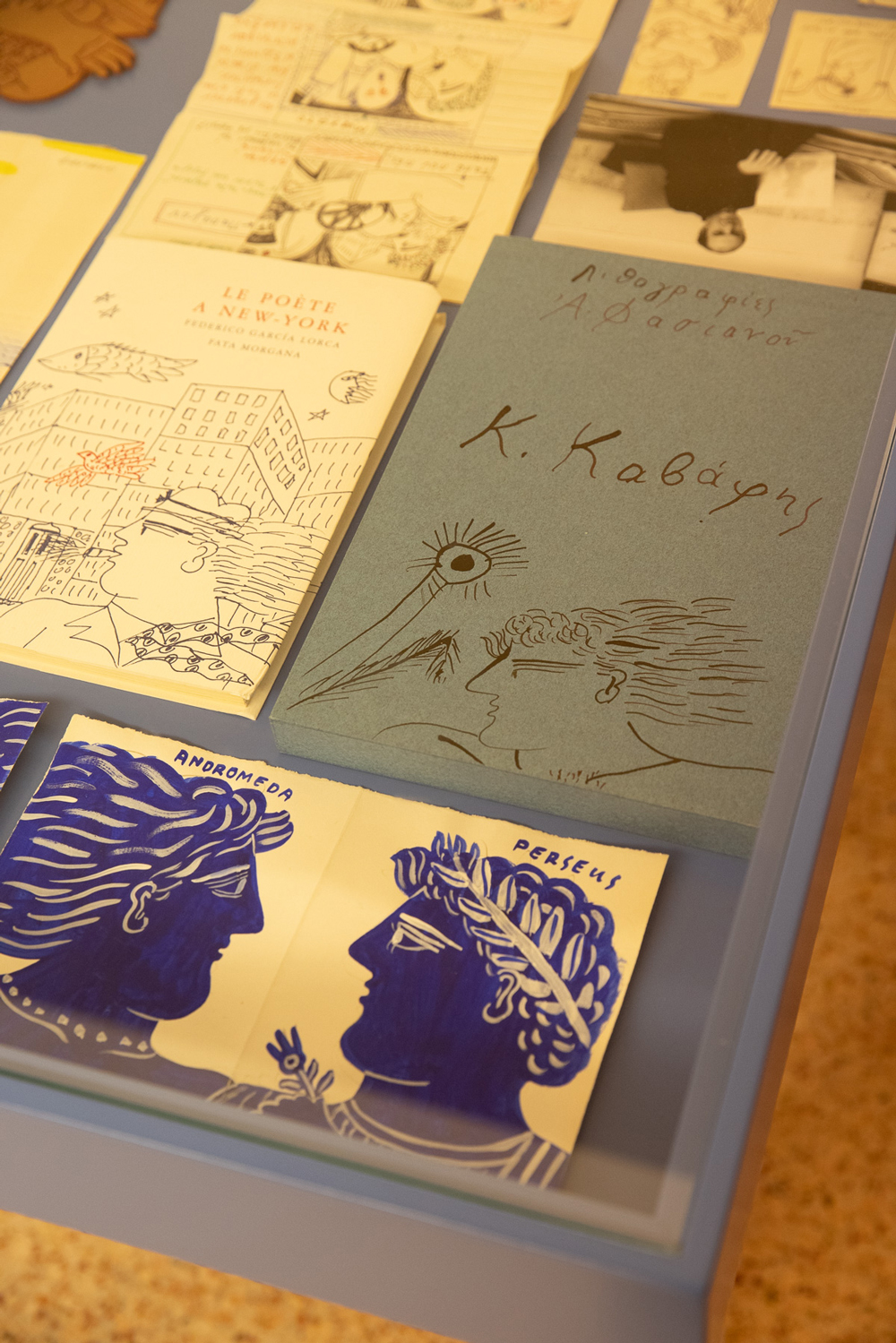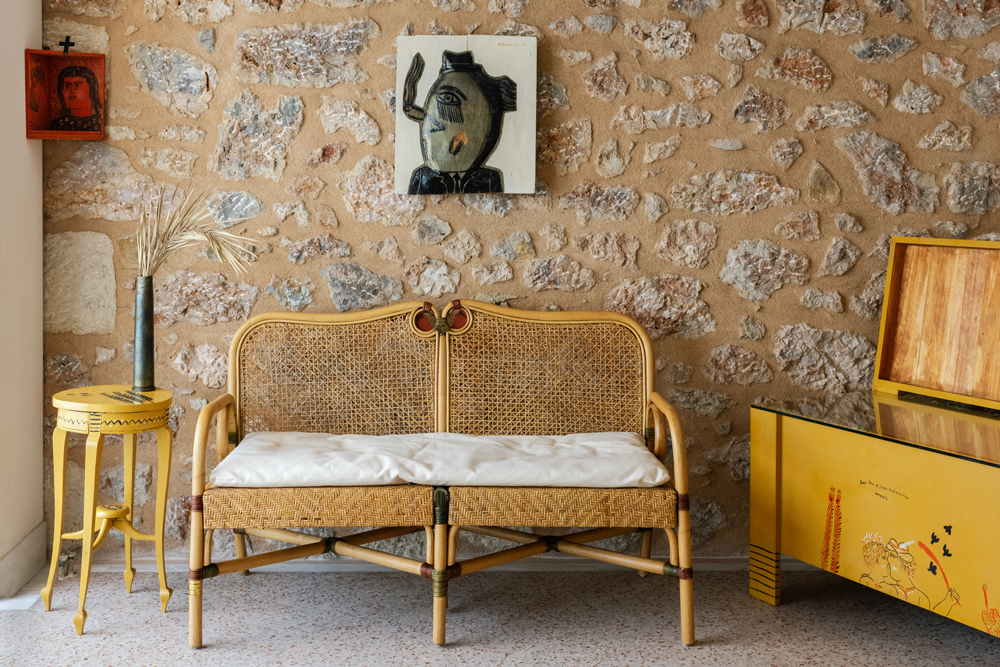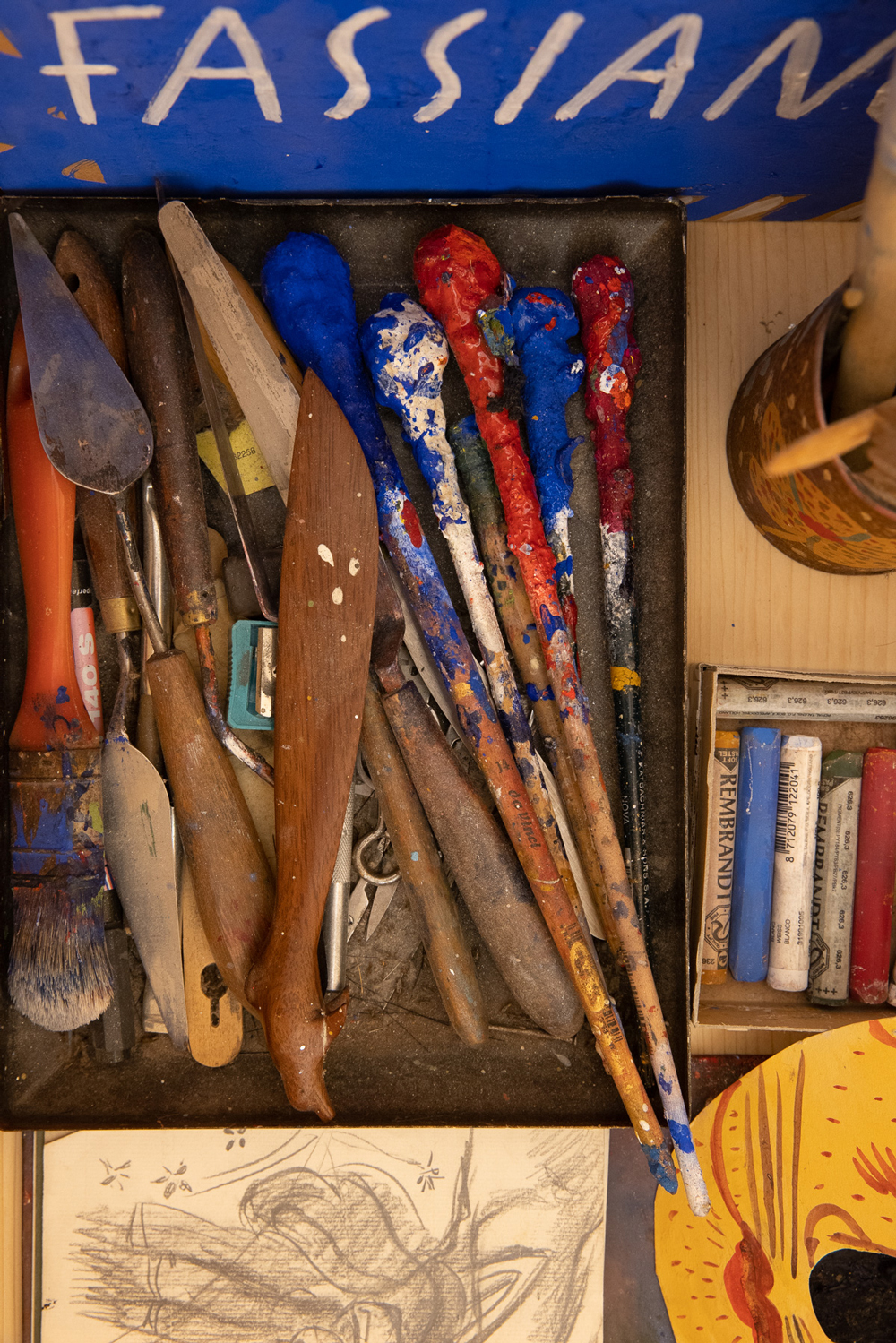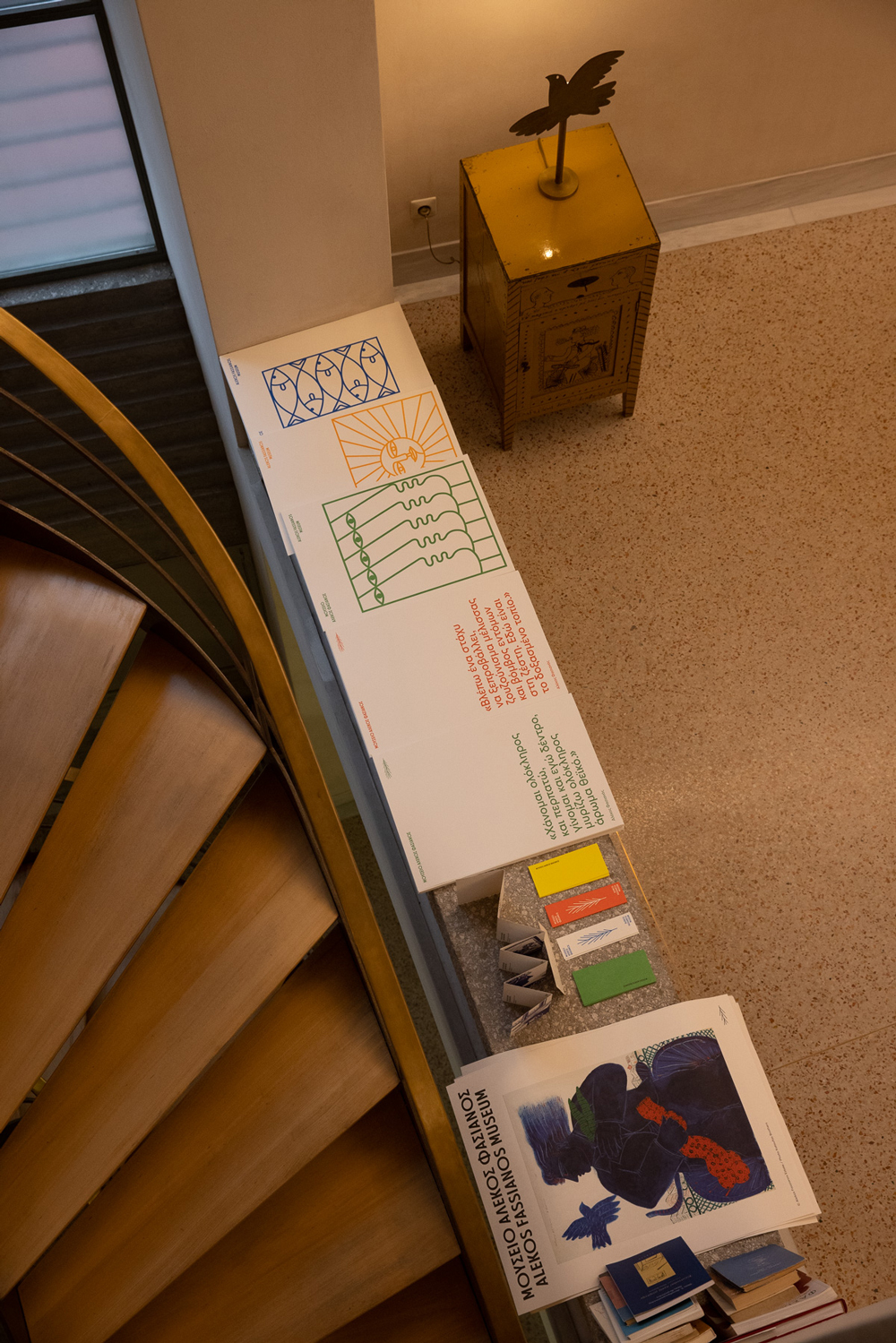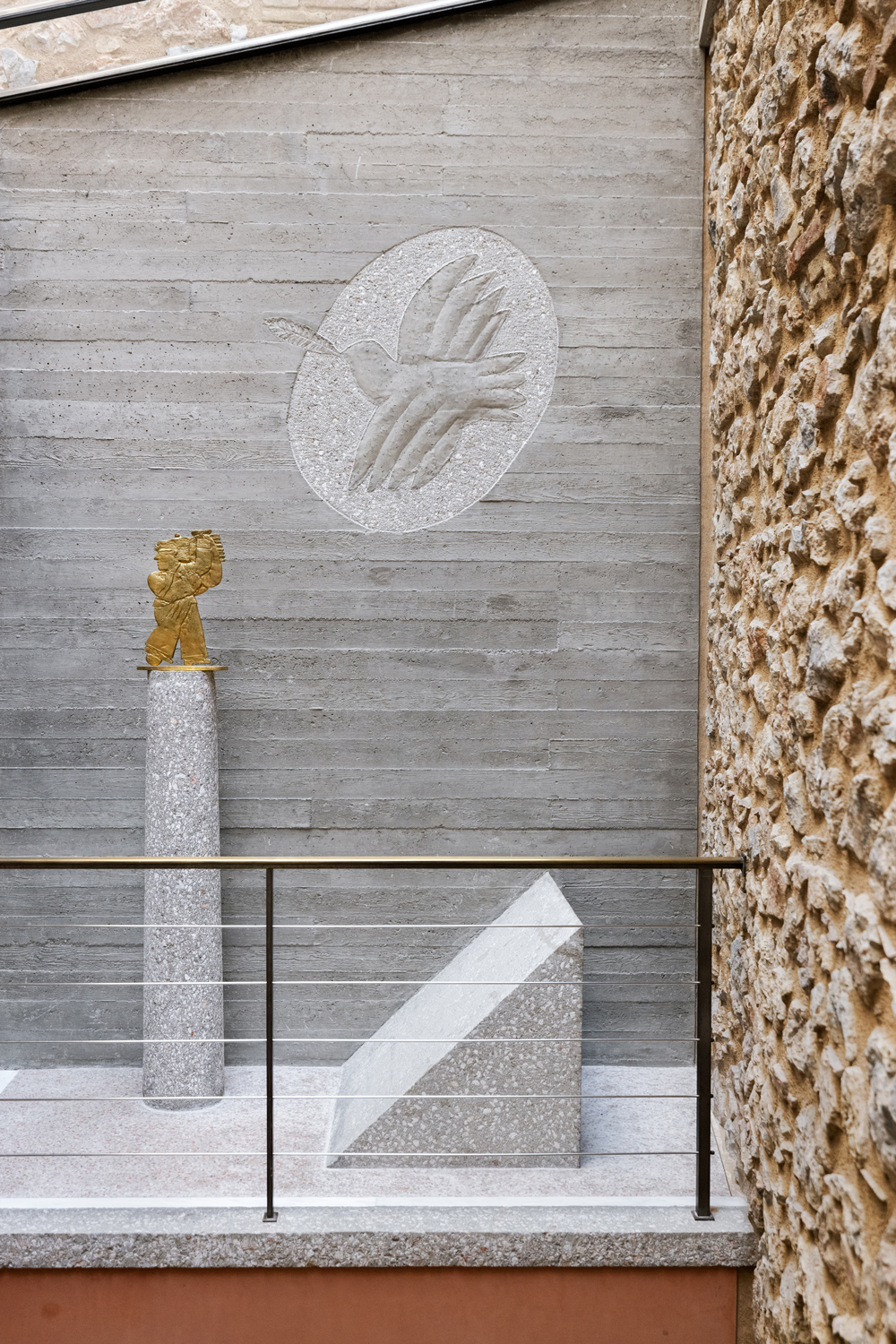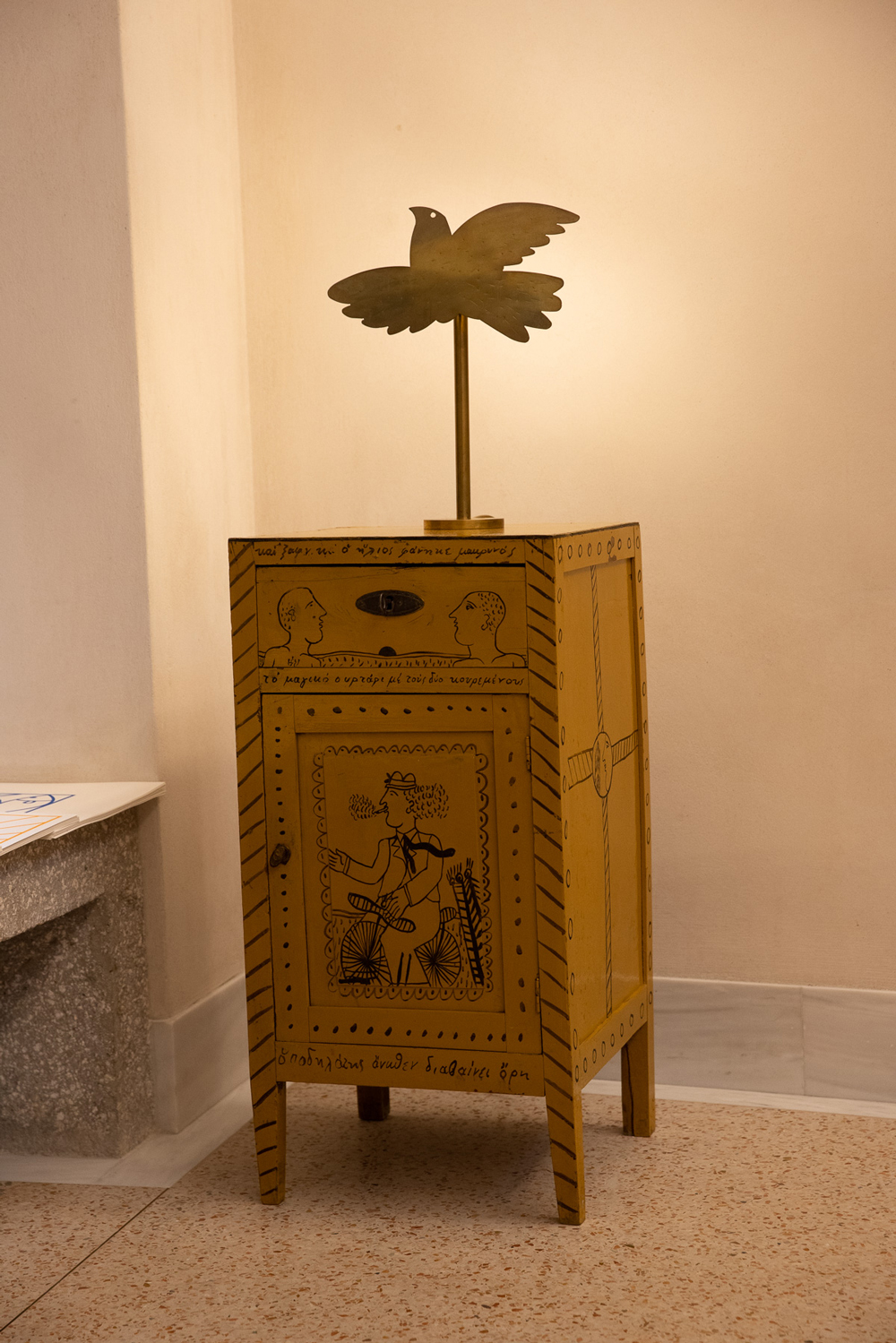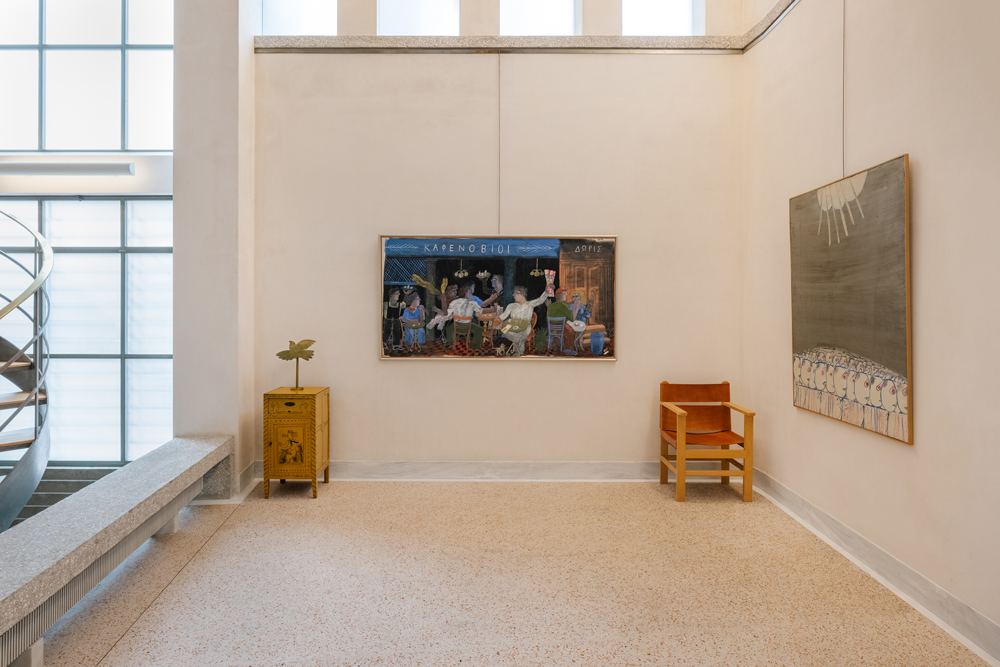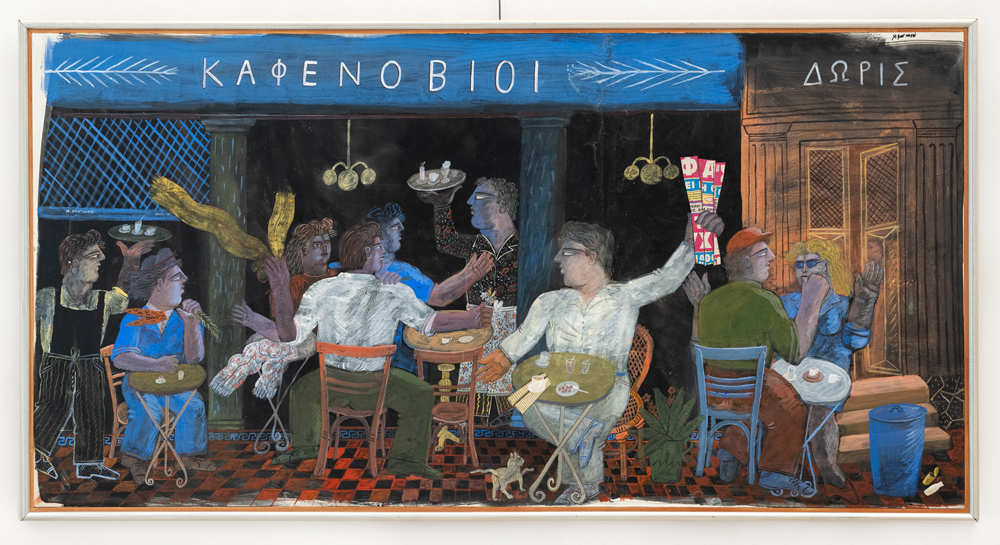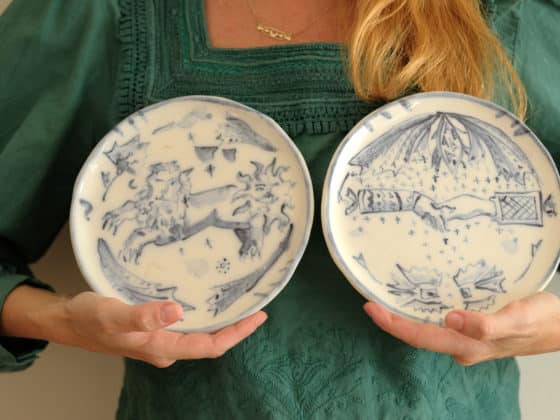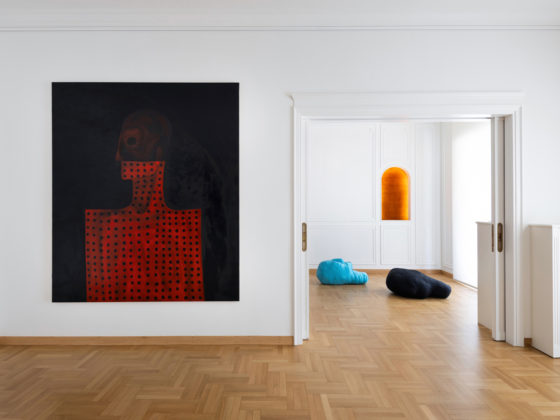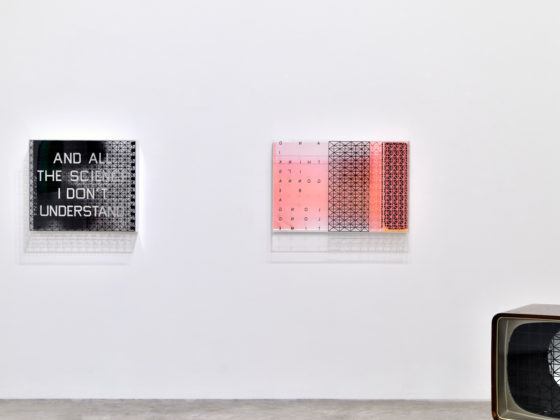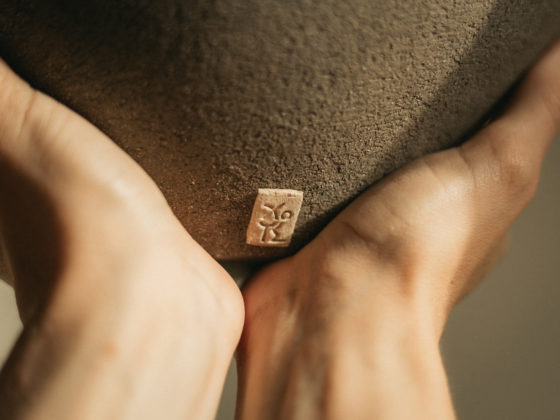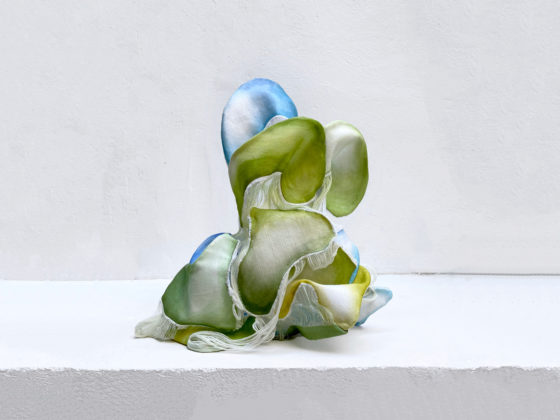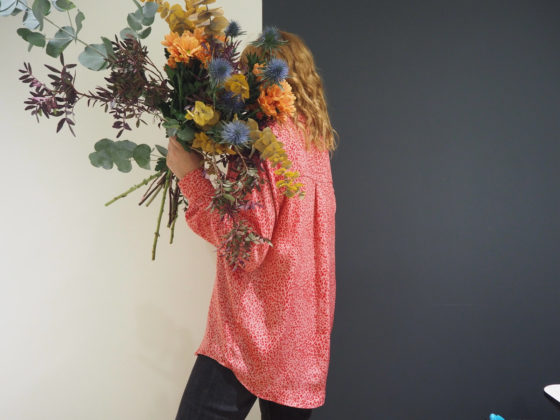The Alekos Fassianos Museum was designed and reconfigured by the architect Kyriakos Krokos in collaboration with the artist Alekos Fassianos. Completed in 1995 and opened to the public in 2023, the museum holds a captivating history. Initially, it occupied the site of Fassianos’ childhood home from the 1930s – a quaint neoclassical house with an inner courtyard and tiled roof. This house became a canvas of memories as Fassianos’ family settled when his grandfather, Andreas, became a priest at the Church of Agios Pavlos. These formative years in the neighborhood left an important mark on his artistic pursuits. In the 1970s, the neoclassical house made way for a multi-story building, a testament to Fassianos’ mother Eleni’s aspirations for her children. However, Fasianos, then in Paris, wasn’t satisfied with the transformation. In the late 1980s, he partnered with architect Kyriakos Krokos to reimagine the space. This marked the museum’s genesis.
Kyriakos Krokos aimed for a clean, minimalist architectural style. The space blends various materials – concrete, stone, mosaic, brick, plaster – painted in earthy tones of gray, red, and ochre. The building’s structure and materials intertwine, a backdrop to Fassianos’ creations. Their artistic sensibilities shine through the meticulous design – stone-carved finishes, marble-framed mosaics, and even an intricate spiral staircase. Painted frescoes grace the walls, while bronze handles and a plaster dragon adorn the doors, revealing a deep artistic synergy.
The museum’s curated exhibition spans Fassianos’ journey, showcasing works from 1956 until his passing. It highlights his early abstract art of the 1960s, influenced by Byzantine heritage, and his distinctive style evident in collages and mixed-media pieces. “Myth of the Neighborhood” unveils memories from his upbringing in Agios Pavlos and explorations across Athens, blending his childhood heroes with mythological figures. Beyond paintings, the exhibition delves into Fasianos’ multifaceted identity. Handcrafted objects, furniture, and lighting fixtures sit alongside his texts and illustrated books. An archival treasure trove reveals his involvement in scenography and costume design for plays. The exhibition unfolds within an artisanal architectural framework, meticulously overseen by Fassianos himself. Holding immense significance in Athens’ cultural landscape, the museum is a rare fusion of artist and architect, where their combined brilliance allows art to converse seamlessly with its surroundings.
